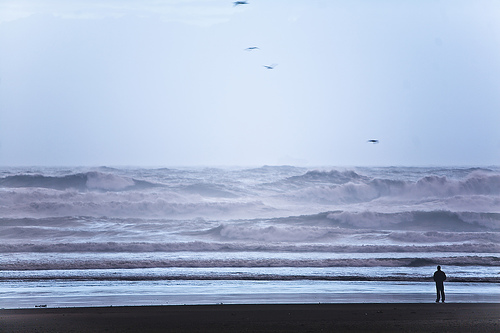REVIEW: The Oceans (BrainPop)

Salinity is the measure of how salty the oceans are. Ocean salinity is not constant around the globe. For example, salinity is higher in the subtropical oceans because the rate of evaporation is higher than the rate of precipitation. In the tropics, the opposite is true. Dissolved minerals that make up the salts in the world's oceans come primarily from the weathering and erosion of rocks on land and from volcanic eruptions.
Other physical properties of the oceans include waves, tides, and currents. Waves and surface currents are influenced by the wind. Deep ocean currents, known as thermohaline currents, are influenced by water density and temperature. The combination of ocean and atmospheric currents can influence weather & climate patterns. El Niño is a climate phenomenon that occurs in the Pacific Ocean, and is a result of the interaction between deep and surface ocean currents, as well as wind patterns and atmospheric conditions.
After you have completed this part of the lesson, you can check the box for this lesson piece in the course to mark it as complete